2021年3月30日 星期二
week 6. difficult forms
DIFFICULT FORMS:
CRITICAL PRACTICES OF DESIGN AND RESEARCH by Ramia Mazé and Johan Redström, IASDR 2007
p1.
1. Rather than prescribing a practice on the basis of theoretical considerations, these critical practices seem to build an intellectual basis for design on the basis of its own modes of operation, a kind of theoretical development that happens through, and from within, design practice and not by means of external descriptions or analyses of its practices and products.
p 2.
2. This prompts John Thackara to argue, “Because product design is thoroughly integrated in capitalist production, it is bereft of an independent critical tradition on which to base an alternative” (Thackara, 1988: 21).
3. As Anthony Dunne and Fiona Raby argue, “At its worst, product design simply reinforces global capitalist values. It helps to create and maintain desire for new
products, ensures obsolescence, encourages dissatisfaction with what we have and merely translates brand values into objects. Design… needs to establish an intellectual stance of its own, or the design profession is destined to loose all intellectual credibility and be viewed simply as an agent of capitalism” (Dunne and Raby,
2001: 59)
p. 3
4. This involved rethinking how to relate both to ‘operative criticism’, posed from inevitably biased positions within practice, and to ‘critical theories’, introduced from without (Hays, 1999).
5. By the 1990s, positions with respect to ‘critical architecture’ had polarized into two camps – one concerned with culture and the other preoccupied by form (Hays, 1984).
p. 4
6...post-critical proponents explore notions such as performativity, procedures, and
pragmatics (Allen, 2000; Baird, 2004/5). In such perspectives, theory and criticality are repositioned in relation to a constructive and projective attitude, capable both of ideological and operational engagement.
7. Practice is explicitly put forward as an approach to – through materials, form,
and construction – framing questions and alternatives to the status quo with clients and the public.
8. The critique posed by anti-design is not of design or planning as such, but of design in instilling and enforcing ideology. That is to say, design ‘in service’ to any imposed ideology, whether political, technological, or cultural, determined in advance and from outside. ...
While engaging theoretically and politically, the activity of designing and
design objects in themselves were seen to offer possibilities for ‘active critical participation’ in larger ideological systems (Lang and Menking, 2003). The ‘products’ of anti-design were not, however, intended as finished or closed forms. While object-oriented, form was often applied provisionally, to open up for ideas, debate, and appropriation – as alternative forms not only of product but ideological consumption.
p. 5
9. Conceptual design draws on art to orient a subversion of design norms. With respect to conceptual art, focus is shifted from the producer and the thing to the concept, and making as setting up such a concept through material objects, scripted or improvised interventions, installations or other means.
Epitomizing such an approach since the 1990s, Droog design countered both Pop and analytic design, tendencies pervading the European design scene at the time.
10.
A more specific version of conceptual design is critical design, most associated in product and interaction design with Dunne & Raby.
They posit the designer as a critically and materially engaged practitioner – a sort of ‘applied conceptual artist’.
In addition to art, they state: “Critical design is related to haute couture, concept cars, design propaganda, and visions of the future, but its purpose is not to present the dreams of industry, attract new business, anticipate new trends or test the market.
Its purpose is to stimulate discussion and debate amongst designers, industry and the public about the aesthetic quality of our electronically mediated existence”
(Dunne and Raby, 2001: 58).
Early works challenged mainstream design tenents (Dunne, 1998). Dunne’s post-optimal’ object, for example, critiques product semantics and the human factors preoccupation with the ergonomic and psychological ‘fit’.
Instead, strategies of defamiliarization and estrangement from modernist aesthetics, are applied as ‘user-unfriendliness’ and ‘para-functionality’ to discourage unthinking ideological assimilation and promote skepticism by increasing the poetic distance between people products.
p. 7
11. Not only for improving design as ‘problem-solving’, but in creating a
space for designers to reflect upon the ideas, theories, logics, and implications of design in and through practice. That is to say, the intervention of an intellectual basis for ‘problem-finding’.
12. Conceptual and critical design might be said to represent a shift in attention away from the spatial object in and of itself to the ideas behind form and emergent in formation.
Explicitly dealing with the materialization of concepts, such concepts become not only
external or retrospective descriptions of design objects, but an integral part of the design objects as such.
In this way, the concepts and theories embodied in an artifact might be differentiated from tacit or propositional knowledge (see, for example, Frayling, 1993/4).
This opens up for a design practice that is not only an operational, but also an intellectual basis, for design research.
p. 8
13. Indeed, certain conceptual frameworks within critical practice such as ‘object as discourse’ and ‘design as research’ provide an essential basis for thinking about how to combine intellectual and operational modalities for contesting and further developing design from within.
p. 9
14. n critical practice, the designed object might be understood as a sort of materialized form of discourse. In Dunne's case, “the electronic objects produced in the studio section of his doctorate are still 'design,' but in the sense of a 'material thesis' in which the object itself becomes a physical critique... research is interpreted as 'conceptual modeling' involving a critique of existing approaches to production/consumption communicated through highly considered artifacts” (Seago and Dunne, 1999: 16-17).
15. In questioning design as merely ‘in service’ to ideas and problems posed in advance and outside of design, design itself is understood to be inherently ideological.
16. Difficult forms might force a hermeneutic reading of the formal operations of its (de)construction – the architect quite literally situated as author, the inhabitant as reader. ...
As any range of postmodern and post-critical revisions suggest, architecture is not writing, nor are spatial practices discursive (Allen, 2000; Hatton, 2004).
p. 10
17. Schön describes a complex interplay of generative and propositional modalities in ongoing and situated practice, proposing that “When someone reflects-in-action, he becomes a researcher in the practice context”(Schön, 1983: 68).
Rather than objective knowledge or abstract theory, conceived of as above or in advance of practice, such perspectives give primacy to subjective interpretation and practical experience.
18. . Jane Rendell considers ‘reflection in action’ in architectural research,...
She argues for design and research that do not just solve or analyze problems but may critically rethink the parameters of a problem, theory or institution.
Indeed, making in itself – particularly making experimental forms and conceptual artifacts – acts as a critique of the paradigms of knowledge held in the architectural profession and building industry.
p. 11
19. In such terms, neither design nor research may be about solving problems or reducing uncertainty, but opening up complexity and criticality.
20. As architect Stan Allen argues, “There is no theory, there is no practice. There are only practices, which consist in action and agencies. Practices unfold in time, and their repetitions are never identical” .
p. 12
21. A focus on temporal form and use as participation – central to interaction design (Redström 2001, Mazé and Redström, 2005; Mazé forthcoming 2007) – opens up new questions, such as how a critical design relates to reflective use, and, vice versa, how might ‘active critical participation’ somehow determine design.
We must ask how thinking and making in interaction design – as ‘problem-finding’ rather than ‘problem-solving’ – might enquire into ongoing relations between critical design and critical use.
p. 13.
22. Elsewhere, we discussed the use of design research programs as “provisional knowledge regimes” (Binder and Redström, 2006), as a structuring of experimentation, and its theoretical orientations, in ways that are not absolute.
23. As the program unfolds through collaborative and multi-disciplinary work over time, the meaning – or consequences – of this proposed view on the world evolve and materialize through design experiments.
24. n this way, the notion of the program might address the need for foundations that can be built upon or criticized, affirmed, or opposed in a critical design practice in a way that is still open for, and sensitive to, heterogeneity(異質性) and multiplicity.
Practice:
1. Survey STATIC! & Slow Technology
2. Select a project from these two programs, write a short critique (200 words) based on "difficult forms" framework.
2021年3月23日 星期二
week 5. Hertzian Tales (chap 3)
泛功能 - 赫茲故事第三章
The prefix “para-” suggests that such design is
within the realms of utility but attempts to go beyond conventional definitions
of functionalism to include the poetic.
泛功能(超越功能)超越傳統定義,包含了詩意。
Eccentric Objects: Para-functionality and Non-design
Some naive, curious, or eccentric objects, outside the world of conventional design,
unintentionally embody provocative or poetic qualities that most product
designs, even those intended to provoke, seldom achieve.
某些天真的、好奇的、古怪的物件,落在傳統設計之外,它們偶然地賦予了挑臖的和詩意的品質,是多數產品設計即使刻意追求也很少達成的。
This is also the case with “Chindogu”. Their individual
elements are recognizable, but the reason for combining them is at first bewildering.
The meaning behind the object is derived from “sense-fiction”: the objects
make functional sense, but are still useless.
Forbidden Emotions: Para-functionality and Design
In a field where “product design is thoroughly integrated in capitalist production, [and] bereft of an independent critical tradition on which to base an alternative,” only a few
designers use the function of products as criticism.
在產品設計完全整合在資本主義產製的領域,失去了獨立批判的傳統,只有一些設計師使用產品功能作為批判。
...what Baudrillard has called the “crisis of functionalism.”
Baudrillard (1981) argues that the acceptance of functionalism as an arbitrary
but dominant rationality gave rise to an irrational counter-discourse that
moves between the two poles of kitsch (庸俗作品) and surrealism:
The surrealist object emerges at the same epoch as the functional object, as its derision (嘲笑)
and transgression. Although they are overtly dys- or para-functional, these phantasmic (幻想的)
objects nevertheless presuppose—albeit in a contradictory sense—the advent of functionality
as the universal moral law of the object, and the advent of this object itself, separated,
autonomous and dedicated to the transparency of its function. When one ponders
it, there is something unreal and almost surreal in the fact of reducing an object to its
function: and it suffices to push this principle of functionality to the limit to make its
absurdity emerge. This is evident in the case of the toaster, iron or “undiscoverable objects”
of Carelman. (192–193)
Jacques Carelman's Impossible Objects
Catalogue of Extraordinary Objects
2021年3月16日 星期二
week 4. Hertzian Tales (chap 2)
非人因 - 赫茲故事第二章

clock by Daniel Weil
User-Friendliness
Transparency
(In)human Factors
人被奴役化,嚴格來說,並不是被機器,也不是被建造和擁有機器的人,而是被機器所賦予的概念模型、價值、以及思想系統。
"This enslavement is not, strictly speaking, to machines, nor to the people who build and own them, but to the conceptual models, values, and systems of thought the machines embody." p.21
藉由詩意化人與電子物件間的距離,或許能促進敏銳的懷疑態度,而非不經思考的吸收電子物件所嵌入的價值與概念模型。
"By poeticizing the distance between people and electronic objects, sensitive skepticism might be encourage, rather than unthinking assimilation of the values and conceptual models embedded in electronic objects." p. 22

tv by Marco Zanuso
透過疏遠與異化,詩意化人與電子物件間的距離,將互動性置於透明與不透明之間,寵物與異形之間,散文與詩歌之間。
"This chapter looks at "poeticizing" the distance between people and electronic objects through "estrangement" and alienation," locating interactivity between transparency and opaqueness, the pet and the alien, prose and poetry." p. 22
Robinson 認為 Norman 的取徑產生了沒有混淆、不會令人失望的產品 (這很明顯是不夠的)。...... 吊詭的是,以使用者為中心,不只是要釐清人們如何描繪事物,而是絕對需要認清: 人們所互動的設計物,對我們如何思考,有巨大的影響。"
"Robinson argues that Norman's approach results in products that will not confuse or disappoint (which is clearly not enough). ... Paradoxically, user-centredness is not just figuring out how people map things, it absolutely requires recognising that the artefacts people interact with have enormous impact on how we think." p. 23
在人因的世界中,物件似乎必須被理解,而非被詮釋。......在人因社群中,將人與科技的關係簡化為認知的清晰程度...
"In the human factors world, objects, it seems, must be understood rather than interpreted. ... The reduction of the relationship between people and technology to a level of cognitive clarity by the human factors community..." p. 23
日常語言通常是資訊性的與工具性的; 如果資訊被成功的傳遞,或是行動被成功的挑起,這些字詞可以被視為
"透明的"。伴隨詩意功能而來的是某種不透明,因為作者既不傳遞資訊,也不尋求挑起行動。這可能帶來一種刻意的模糊。
"Everyday language is usually informative and instrumental;...since if a piece of information has been successfully passed or some action successfully instigated, the words by which this has been managed can count as "transparent." With the poetic function comes a certain opacity, for the writer is no longer passing information nor seeking to instigate action. There may also come an intentional ambiguity." p. 35
"The poetic function of language has as its effect that when we read literature we become
more aware of language than we are when we are confronted by language in its other
functions. To introduce another term dear to the formalists, in literature language is
“foregrounded. ... In the everyday use of language it will seldom be practical and may even be found impolite to “foreground” language.”"
根據 Viktor Shlkovsky,詩意藝術的功能,是對抗感知的慣例模式所支持的熟悉化。
"According to Viktor Shklovsky,..., the function of poetic art is to counter-act the familiarization encouraged by routine modes of perception." p. 35

fan heater by Winfried Scheuer
為了提供環境讓使用者反思電子物件的日常生活經驗,我們必須超越"根植於視覺的形的陌異",進而探索"根植於功能性的使用美學"...
"To provide conditions where users can be provoked to reflect on their everyday experience of electronic objects, it is necessary to go beyond forms of estrangement grounded in the visual and instead explore the aesthetics of us grounded in functionality..." p. 42

radio by Daniel Weil
想法與事物的適當匹配,特別在抽象想法凌駕實用性中,讓設計得以成為一種論述形式,產生詩意的創造,藉由挑戰某些法則(物理的、社會的、或政治的),而非確認這些法則,呈現出一種批判的功能。
"The fit between ideas and things, particularly where an abstract idea dominates practicality, allows design to be a form of discourse, resulting in poetic inventions that, by challenging lows (physical, social, or political) rather than affirming them, take on a critical function." p. 42
然而,我們自身與電子物件環境間的距離,也許可以被詩意化,針對環境所賦予的價值與概念,提倡一種懷疑的敏銳性。
"Instead, the distance between ourselves and the environment of electronic objects might be "poeticized" to encourage skeptical sensitivity to values and ideas this environment embodies." p. 42
2021年3月9日 星期二
week 3. Hertzian Tales (chap 1)
_________________________________________________________________________________
Chapter 1. The Electronic as Post-Optimal Object
2021年3月2日 星期二
week 2. the object as discourse
action research vs. co-operative inquiry
The object as discourse
p1.
1. In short, as a result of what might be termed 'methodological intimidation' (方法論上的恐嚇), research work carried out in colleges of art and design stands a very real risk of losing those qualities of originality, iconoclasm (破除偶像), energy, style and wit which have characterised the best of art school culture since the 1950s.
p. 3
2. Rejecting the electronic product designer's traditional role as semiotician, he attempts to map a new conceptual territory on which to explore the electronic as 'post-optimal object', turning his attention away the familiar attempt to achieve 'optimum performance levels' and towards more fundamental philosophical issues.
3...., Dunne's research focuses on the relationship between electronic objects and the realms of poetry and aesthetics.
4. Design is seen as a form of socio-aesthetic research towards the integration of aesthetic experience and everyday life through the development of conceptual products rather than working prototypes of models which attempt to simulate a final product designed for mass production.
5. As a PhD by project, Dunne's work uses research through the design process to explore the development of an approach that allows the development of critical responses and a sceptical sensibility towards the ideological nature of design with the purpose of stimulating original aesthetic possibilities for new kinds of electronic object.
7. The ultimate aim of the research project is the development of electronic products which by'making strange' (陌異化) or 'poeticising the distance' (詩意化距離) between ourselves and our artefactual environment, facilitate sociological awareness, reflective and critical involvement with the electronic object rather than its passive consumption and unthinking acceptance.
8. Rather than aiming for transparency, as would a conventional applied researcher/product designer, his (Dunne's) attempt to enhance the critical distance between the electronic object and the human subject through the introduction of 'poetic' techniques of aesthetic 'estrangement' is reminiscent of the writing of Frankfurt School theorists such as Walter Benjamin or the methods of avant-garde theorist/performers such as John Cage,...
p. 4
9.... his idea of using the process of invention as a mode of discourse (以發明過程為論述), a poetic invention (詩意的發明) that, by stretching established conventions, whether physical, social or political, rather than simply affirming them, takes on a radical critical function, a material critical theory of what Dunne terms a 'parafunctionality.'
10. To this extent Dunne's work offers a positive and radical model of the action researcher in design as a critical interpreter of design processes and their relationship to culture and society rather than a skilled applied technician preoccupied by the minutiae (細節) of industrial production or a slick but intellectually shallow semiotician.
11. In Dunne's case the electronic object produced as the studio section of the doctorate is still 'design' but in the sense of a 'material thesis' (實體論文) in which the object itself becomes a physical critique (實體批判).
EX1:
Write a short essay (200 words) on this work according to the above concerns.

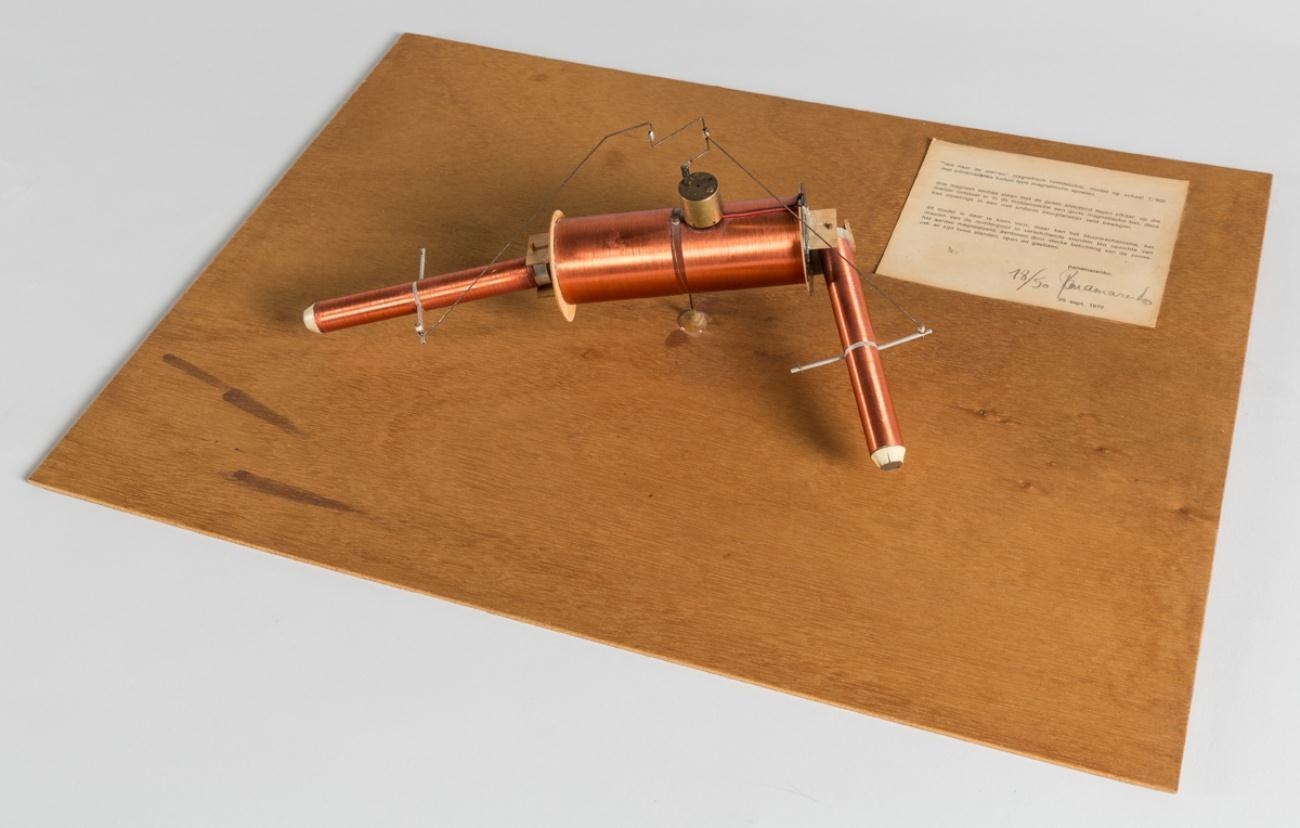
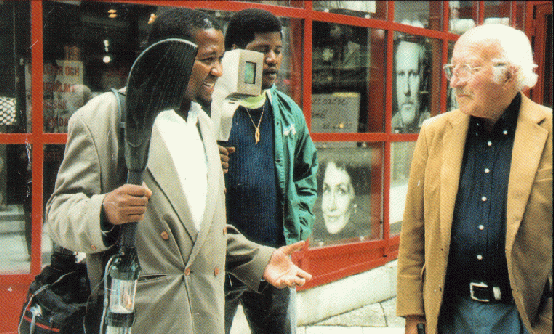
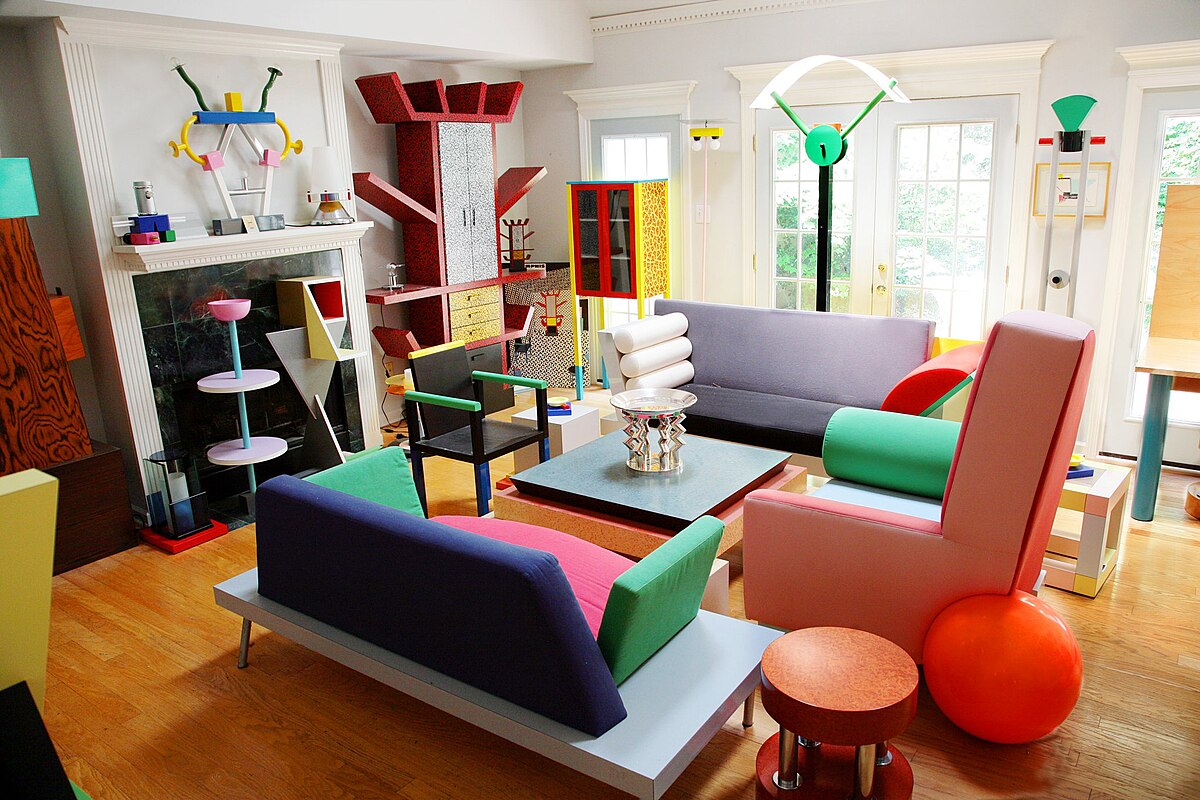
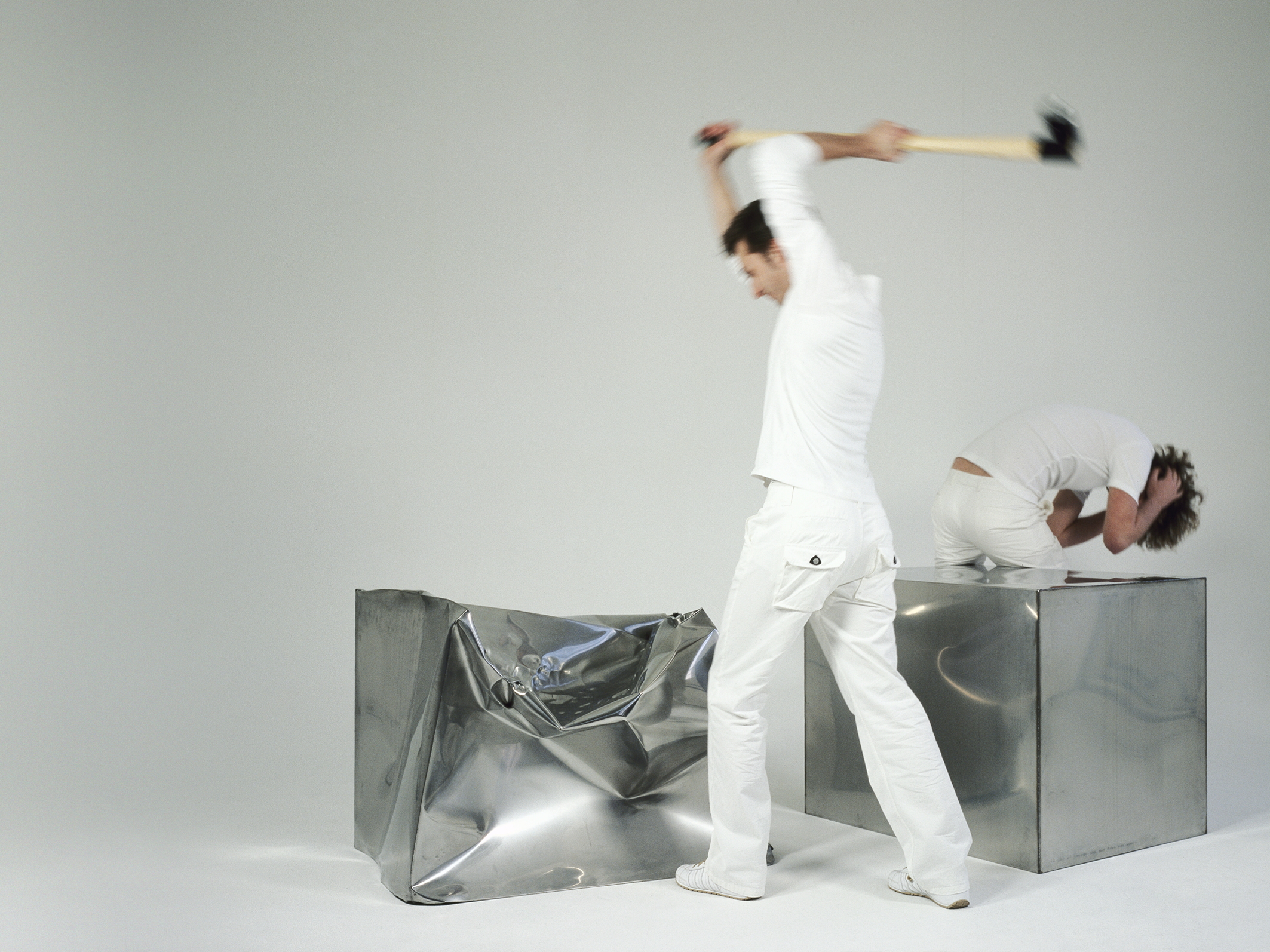

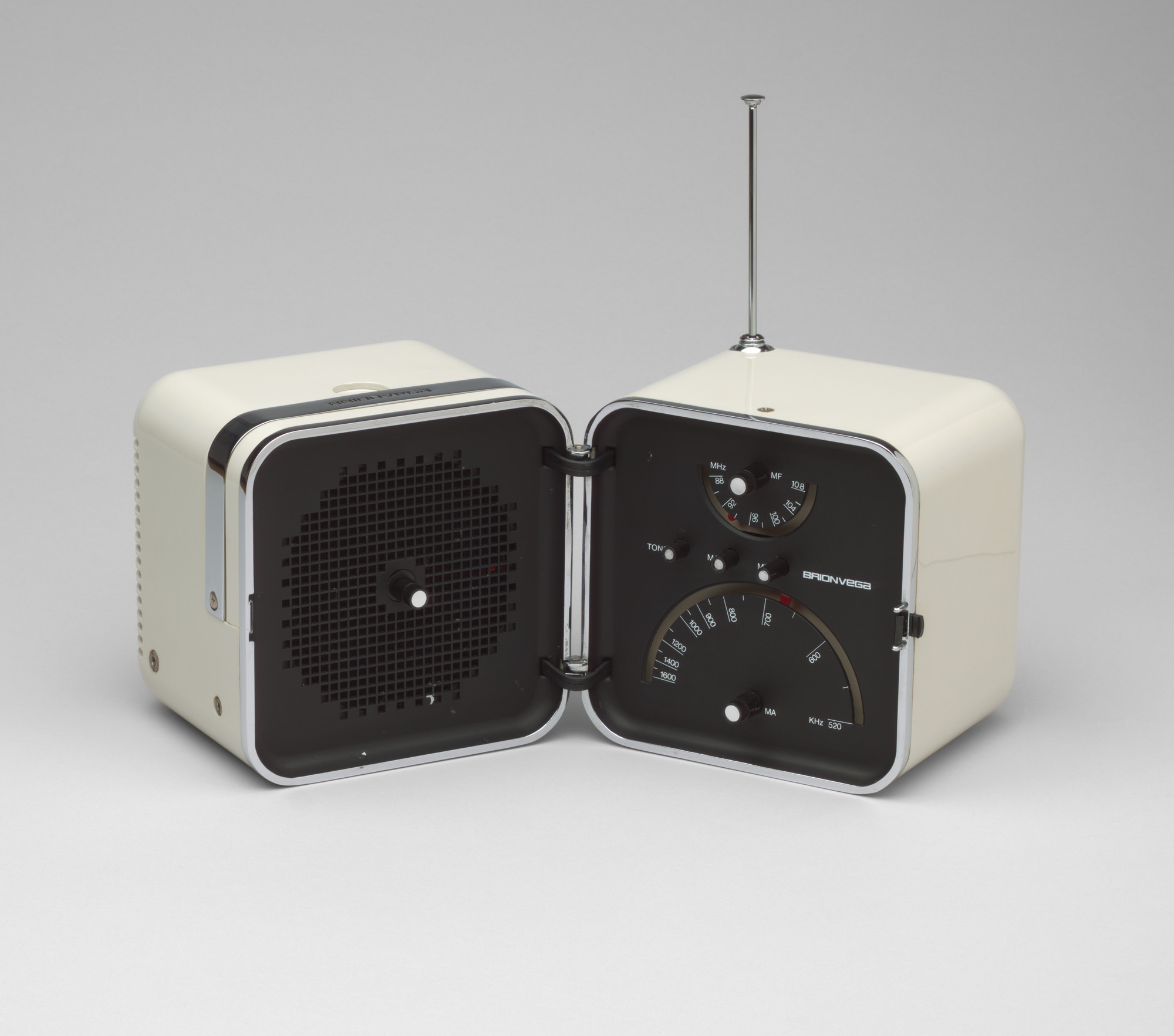

.jpg)

